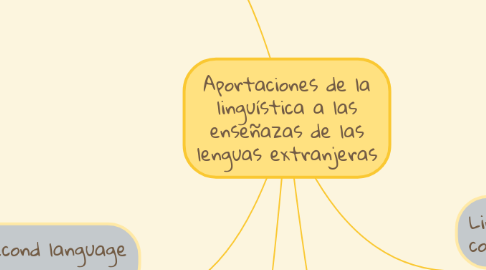
1. Theories of first language acquisition
1.1. Skinner´s verbal behaviour
1.1.1. Language development is the result of a set of habits
1.2. Chomsky´s innatism theory
1.2.1. Children must be born with an innate capacity for language development
1.3. The interactive view
1.3.1. Language is modified to suit the capability of the learner
1.3.1.1. Piaget
1.3.1.2. Vigotsky
2. Theories of second language acquisition
2.1. Behaviourism
2.1.1. L2 learning is a mechanical process
2.2. Contrastive analysis
2.2.1. All L2 errors come from differences between L1 and L2
2.3. Cognitivism
2.3.1. Learners use their cognitive abilities in learning a language
2.4. Error analysis
2.4.1. The incorrect sentences produced by L2 learners were signs of their underlying interlanguage, not of their poor control of the L2
2.5. Krashen´s monitor model
2.5.1. The language is seen as a means of communications
2.5.1.1. Acquisition learning
2.5.1.2. Monitor hypothesis
2.5.1.3. Natural order hypothesis
2.5.1.4. Input hypothesis
2.5.1.5. Affective filter hypothesis
2.6. Constructivism
2.6.1. L2 learners construct knolwedge for themselves as they learn
3. Differences and similarities
4. Linguistics and ints contribution to FLT
4.1. Formal linguistics
4.1.1. Grammar
4.1.2. Structural linguistics
4.1.3. Generative/trasnformational approach
4.2. Sociolinguistics
4.2.1. Language variation
4.2.2. Language and social interaction
4.2.3. Language attitudes
4.2.4. Language planning
4.3. Psycholinguistics
4.3.1. Verbal procesing
4.4. Applied methodologies
4.4.1. Teaching methodologies
4.5. Neurolinguistics
4.5.1. Relation between language teaching methodologies
4.6. Comparative linguistics
4.6.1. Unconsciously process
4.6.2. Historial relatedness between languages
5. Language learning
5.1. Acquisition
5.2. Learning
5.2.1. Consciously knowledge of a second language
